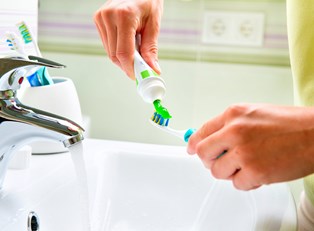Dental caries (also known as tooth decay or cavities) are the holes that form in the teeth due to the presence of bacteria in the mouth. In minor cases, they may only pose mild discomfort to patients, but in severe instances they can lead to tooth loss or even infection. Because the damage done by dental caries is irreversible, preventing them from developing is incredibly important. Here is a quick look at dental caries—including their causes, symptoms, and what can be done to stop them.
The Cause of Dental Caries
Plaque is a sticky, clear film that naturally develops on the surface of the teeth and contains thousands of bacterial microorganisms. These bacteria feed on the sugars found in food, and as they eat they produce an acidic byproduct that wears away at the enamel that covers your teeth. Over time, this acid can completely strip the enamel lining and begin to destroy the teeth themselves.
While this is easily the most common way that dental caries occur, there are certain rare diseases that can cause them as well. For example, the genetic condition amelogenesis imperfecta prevents enamel from forming correctly, which frequently leads to it falling entirely off of teeth. Without this protection, patients are at a much higher risk of developing dental caries.
The Symptoms of Dental Caries
In the earliest stages of tooth decay, patients may be completely unaware that they are suffering from caries. However, particularly observant people may begin to notice that small chalky rough patches are starting to develop on their teeth. This is an indicator that bacterial acid is beginning to eat through the enamel lining.
As dental caries progress, these chalky patches will begin to turn brown or black. These patches of decay can be hard to detect as well, especially if they occur on the back teeth, where they’re difficult to see. However, by this point patients should begin to notice increased sensitivity or pain near the caries.
Finally, as the tooth decay makes its way into the pulpy center of a tooth, most sensitivity to temperature changes will cease as its tissues begin to die. However, as this occurs, sensitivity to even slight pressure will increase dramatically, making eating a difficult and painful task.
Preventing Dental Caries
Once dental caries work their way through the enamel and begin destroying a tooth, there is not much that can be done to reverse the process. However, preventing the damage from progressing to this stage is not difficult.
The most important preventative measure is a good dental routine at home. This includes brushing at least twice a day and flossing once daily. Some dentists recommend using an antibacterial mouthwash once a day as well, but for people with relatively good teeth, this is largely unnecessary. For those who have struggled with dental health in the past, it may be a good addition, though.
It’s also important to limit the amount of sugar in your diet. Since the bacteria in plaque feed on sugar and use it to produce enamel-stripping acid, cutting back can help reduce their ability to do damage to your teeth. While it’s not possible to avoid sugar entirely, stay away from sticky substances like candy, which have sugars that can adhere to the teeth for longer periods of time.
Finally, regular teeth cleanings are essential in preventing dental carries. Sometimes plaque accumulates in areas that are hard to reach with a toothbrush or floss and will require professional removal by a dentist. For most people, a cleaning every six months is enough to keep tooth decay from forming.



